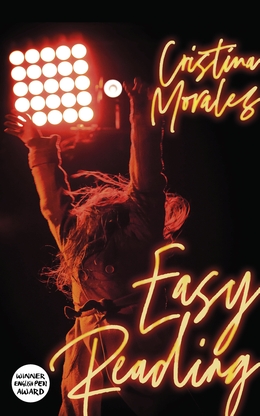Easy Reading by Cristina Morales is a bold and thought-provoking novel. It explores themes of autonomy, identity, and societal control through the lives of four cousins. Each of them lives with an intellectual disability and navigates a system designed to marginalize rather than empower them. This award-winning book challenges conventional ideas about disability, inclusion, and personal freedom.
Setting and Premise
The story takes place in contemporary Spain. The four protagonists—Nati, Patricia, Marga, and Àngels—live together in an apartment provided by a state care program. This program, while claiming to support their independence, tightly regulates their lives. Through their individual narratives, the novel exposes the tension between societal control and personal autonomy.
Main Characters
Nati: The Rebel
Nati is the most vocal of the cousins. She writes journal entries filled with sharp critiques of the system and society. Nati sees the state’s interventions as oppressive rather than helpful. Her reflections question societal norms and challenge the reader to rethink ideas about inclusion.
Patricia: The Performer
Patricia expresses herself through flamenco dancing. Her art becomes a symbol of her individuality and resistance. Through her performances, she confronts societal stereotypes and explores her identity.
Marga: The Advocate for Liberation
Marga’s story centers on her sexual awakening and her fight against infantilization. She challenges the idea that people with disabilities cannot have romantic or sexual lives.
Àngels: The Quiet Artist
Àngels communicates through poetry and visual art. Her introspective nature offers a softer perspective, contrasting with her cousins’ fiery personalities.
Themes Explored in the Novel
The Struggle for Autonomy
The central theme of the novel is the fight for independence. Despite being labeled as “disabled,” the women assert their agency in creative and unexpected ways. The title, Easy Reading, is ironic, pointing to the simplified expectations society places on people like them.
Critique of Institutional Systems
The state-run care program highlights the paradox of inclusion. While it claims to help, it often restricts the women’s freedom. Caregivers and officials make decisions for them, perpetuating control rather than fostering independence.
Intersectionality of Oppression
The novel explores how disability intersects with gender and class. The cousins face challenges not only as individuals with disabilities but also as women in a patriarchal society. This layered marginalization shapes their experiences.
Language as a Tool of Power
Morales uses diverse narrative styles, from journals to poetry, to showcase the women’s unique voices. This variety underscores the complexity of their experiences and the importance of representation.
Sexuality and Agency
The novel boldly addresses the sexuality of its protagonists. By exploring themes of desire and body autonomy, Morales confronts taboos surrounding disabled individuals’ right to intimacy.
Plot Highlights
Life Under Surveillance
The women’s lives are heavily monitored by the state. Their routines, relationships, and decisions are subject to scrutiny. This constant surveillance symbolizes the control exerted over marginalized groups.
Nati’s Intellectual Rebellion
Nati challenges the system through her writing. Her critiques reveal the hypocrisy of the care program and inspire her cousins to resist as well.
Patricia’s Flamenco Resistance
Patricia uses her dancing to assert her identity. Her performances highlight her creativity and confront the stereotypes imposed on her.
Marga’s Defiance of Norms
Marga’s journey of self-discovery challenges societal norms about disability and sexuality. She refuses to be treated as a child or stripped of her right to explore relationships.
Àngels’ Artistic Expression
Through her art, Àngels finds a voice that transcends words. Her quiet strength offers a powerful counterpoint to the louder forms of resistance in the novel.
Writing Style and Structure
The novel uses a non-linear structure, alternating between the perspectives of the four cousins. Morales combines humor, anger, and poetry, creating a rich and varied narrative. Her use of different forms—like journal entries and bureaucratic documents—makes the book both challenging and engaging.
Conclusion
Easy Reading is a compelling exploration of autonomy, identity, and resistance. Cristina Morales invites readers to question their assumptions about disability and inclusion. By giving voice to marginalized characters, the novel offers a profound critique of societal control while celebrating the resilience of those who defy it.
